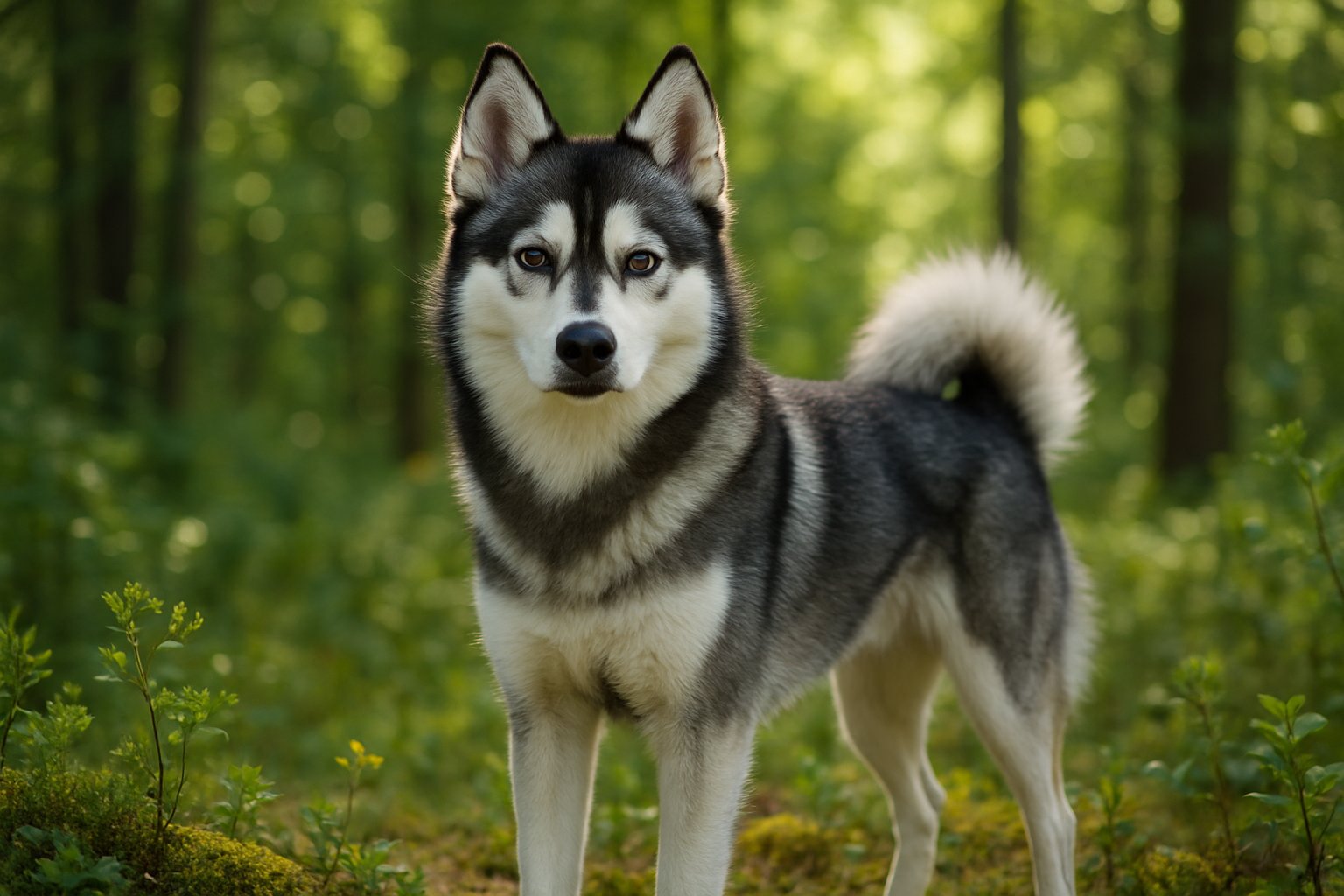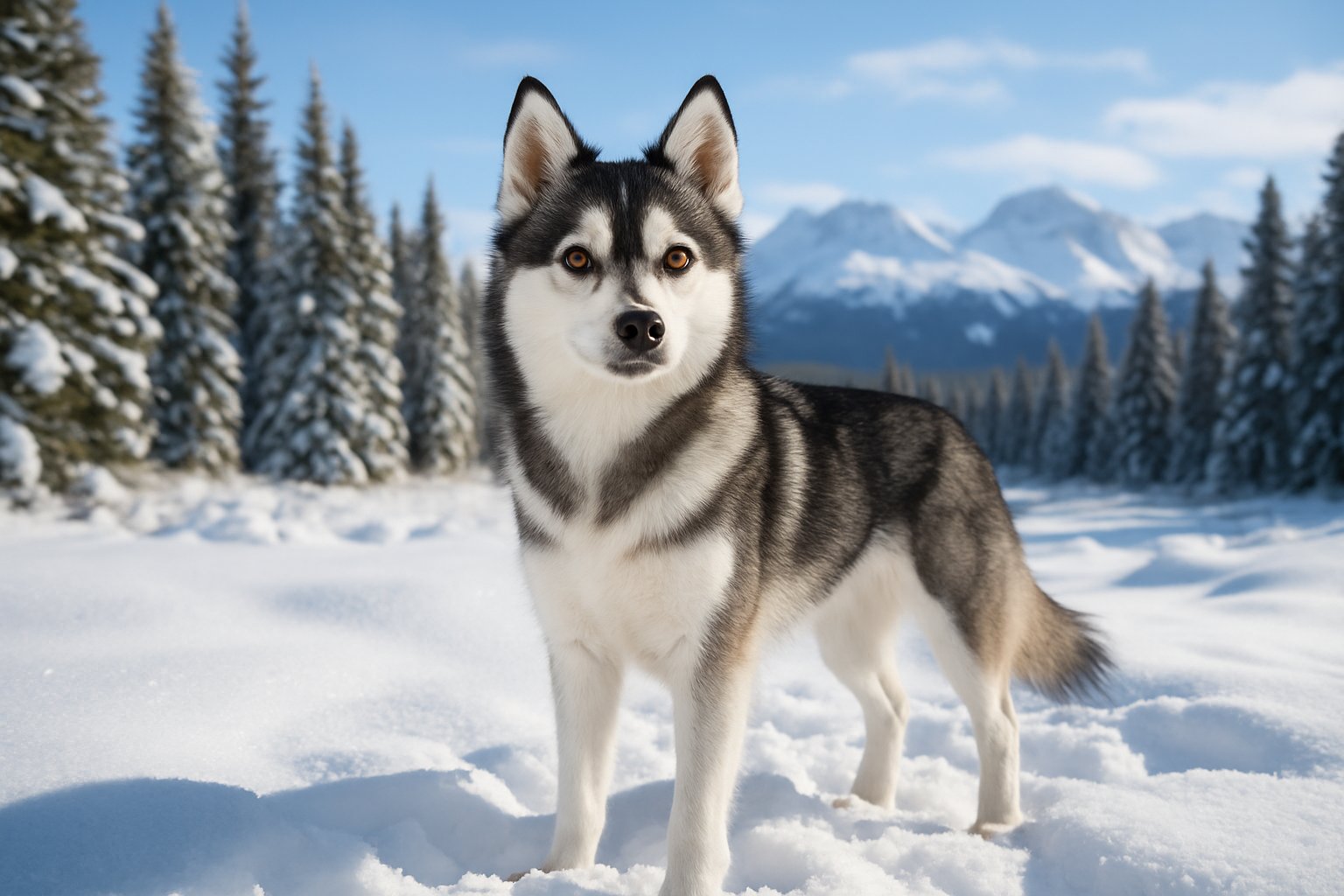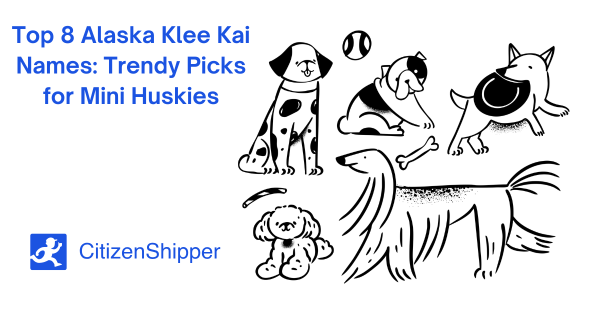Are you curious about the Alaskan Klee Kai and what makes this breed so special? Learning about these unique dogs will help you understand if they fit your lifestyle and what to expect as an owner.
You’ll discover some facts that might surprise you, whether you’re thinking about getting one or just want to know more about this interesting breed.
1. Alaskan Klee Kai means ‘small dog’ in the Inuit language
- The name “Alaskan Klee Kai” has a simple but meaningful origin. “Klee Kai” comes from an Inuit term that translates to “small dog” in English. This name was chosen to reflect the breed’s compact size and roots in the Arctic region.
- When the breed was developed, the goal was to create a dog with the looks of a husky but in a much smaller size. The name fits perfectly because the Alaskan Klee Kai is known for its petite, agile body and fox-like face.
- Adding “Alaskan” to the name honors the breed’s origin in Alaska, where it was first bred in the 1970s. You can learn more about the breed’s name and history from the background of the Alaskan Klee Kai and its connection to Inuit language.
- Knowing the meaning of their name helps you understand why these dogs are special. Their title is more than just a label—it’s a nod to their heritage and unique character.
2. The breed was developed in the 1970s
You might be surprised to learn that the Alaskan Klee Kai is a fairly new breed. The breed was first created in the 1970s by a woman named Linda Spurlin in Wasilla, Alaska. Linda set out to develop a smaller dog that looked like the Alaskan Husky. She wanted a companion-sized dog with similar looks but a more manageable size for a pet.
To achieve this, Linda used Siberian Huskies, Alaskan Huskies, and American Eskimo dogs in her breeding program. The result was a breed that kept the husky’s wolf-like features but came in a much smaller package. The name “Klee Kai” means “small dog” in the Inuit language, which fits the breed’s purpose and appearance perfectly.

3. They are bred to resemble miniature Siberian Huskies
When you first look at an Alaskan Klee Kai, you might think it is just a smaller version of a Siberian Husky. This is not an accident. Breeders worked carefully to create a dog that keeps the classic husky look but in a much smaller body. Alaskan Klee Kai have many of the same features as Siberian Huskies. You will notice similar markings, upright triangle-shaped ears, and bright, alert eyes.
4. Originally created to be companion dogs for Alaska Native people
The Alaskan Klee Kai was developed in the 1970s. Linda Spurlin started the breed to be a smaller version of the Alaskan Husky that could serve as a friendly, loyal companion. These dogs were not bred to pull sleds or work in the harsh wilderness. Instead, you can see their purpose as family pets and close friends for people who wanted the looks of a Husky in a smaller, more manageable size.
5. Alaskan Klee Kai come in three sizes: toy, miniature, and standard
- When you look at Alaskan Klee Kai, you may notice the breed comes in different sizes. There are three official types: toy, miniature, and standard. Each one has its own size range and weight.
- The toy Alaskan Klee Kai is the smallest. They stand under 13 inches tall and usually weigh from 6 to 12 pounds. These dogs are easy to carry and often fit well in smaller living spaces.
- Miniature Alaskan Klee Kai are a little larger. They grow to about 13 to 15 inches tall and weigh between 10 and 18 pounds. Miniatures are a popular choice if you want a mid-sized pet that stays manageable.
- The largest type is the standard Alaskan Klee Kai. Standards measure from 15 to 17 inches in height and weigh up to 20 pounds, although some may be a little heavier according to some size charts.
- All three sizes have the same main features: a thick coat, curled tail, and alert expression. The size differences give you options based on your home and lifestyle. You can read more about the three sizes of Alaskan Klee Kai on HelloBark and other breed information sites.
6. They have a high energy level and need regular exercise
Alaskan Klee Kai are known for being very active dogs. If you decide to bring one home, you should be ready to give them plenty of exercise every day. They need more than just a quick walk around the block. Taking them for long walks or visiting the dog park helps them burn off energy. This breed enjoys activities that let them run, explore, and play.
7. The breed is recognized by the United Kennel Club and the American Rare Breed Association
You can feel confident knowing the Alaskan Klee Kai is officially recognized by well-known dog organizations. The United Kennel Club (UKC) recognized the breed in 1997. This means you can register your dog and take part in UKC events and competitions. The American Rare Breed Association (ARBA) also recognized the Alaskan Klee Kai. The breed gained ARBA’s recognition in 1995, not long before the UKC. This helped build more interest and trust in the breed among dog enthusiasts.
8. Alaskan Klee Kai are highly intelligent and trainable
You will notice right away that Alaskan Klee Kai are smart dogs. They are quick to learn new commands and understand routines fast. This breed has a reputation for being alert and observant. Training sessions can go smoothly as long as you use positive reinforcement. Treats and praise work well to keep them interested and motivated. Consistency is important because these dogs can also be a bit stubborn at times.
9. They have a strong bond with their owners and make loyal pets
Alaska Klee Kai are known for forming close relationships with their families. They quickly grow attached to the people they live with and show clear preference for them over strangers. You may notice your Alaska Klee Kai following you around the house or choosing to stay nearby when you are at home. This breed enjoys being included in daily activities and often looks for attention from its favorite people.
10. The breed requires consistent training and socialization
You need to commit to steady training with an Alaskan Klee Kai. This breed is smart but can be stubborn if they do not know what is expected of them. Consistent routines help them learn rules and good manners. Early socialization is just as important. If you introduce your Alaskan Klee Kai to new people and pets while they are young, they are less likely to become shy or nervous around strangers. Without enough socialization, they may be wary or bark at unfamiliar faces.
11. Alaskan Klee Kai are generally good with older children but need supervision around younger kids
Alaskan Klee Kai tend to do well with older children who understand how to be gentle and calm. These dogs appreciate kids who know how to respect their boundaries. Quick movements or rough play can make them nervous. Younger children may not always recognize when a Klee Kai needs space. Because of their small size and sensitive nature, the breed can feel overwhelmed by unpredictable behavior or loud noises. It’s easy for them to become anxious if they’re handled too roughly.
12. They can be reserved or wary around strangers
Alaskan Klee Kai usually do not rush to make friends with new people. They often watch from a distance and may seem shy or cautious when meeting someone for the first time. This trait is part of their natural personality. You might notice your Klee Kai barking or keeping away from unfamiliar guests. This is a way for them to show wariness without being aggressive. Some may even avoid contact entirely until they feel more comfortable.

13. Their coat colors include black and white, gray and white, and red and white
- When you look at an Alaskan Klee Kai, you’ll often notice striking coat color patterns. The three main color combinations are black and white, gray and white, and red and white.
- Each of these colors gives the breed a unique look. Black and white coats stand out with high contrast. Gray and white Klee Kai range from light silver to darker charcoal tones.
- Red and white Klee Kai are less common, but they have a warm and distinct appearance. Within these main color groups, you might see small variations. For example, there are types such as wolf gray, cinnamon red, and jet black, which add even more variety to the breed’s appearance.
- No matter which color you prefer, each option is recognized for the breed. You can learn more about these coat colors by visiting this detailed guide on Alaskan Klee Kai colors.
14. They have a thick double coat suited for cold climates
- Alaskan Klee Kai have a thick double coat. This coat helps them stay comfortable in cold weather. The double coat has a soft underlayer and a denser outer layer for protection.
- You will notice that this breed’s double coat helps trap warmth close to the body. It also keeps out wind and water. Because of this, you can expect them to handle winter and chilly temperatures well.
- Many northern breeds share this trait, but the Alaskan Klee Kai’s double coat is especially good for insulation. This makes them well suited for colder places, much like their larger relatives, the Siberian Huskies and Alaskan Malamutes, who are also built for snow and cold weather.
- Their fur is not just for warmth. It also protects their skin from sun and insects when the weather warms up. The double coat is a key reason why the Alaskan Klee Kai is considered adaptable to various climates.
- Regular brushing is important to help with shedding. During some seasons, you might notice more hair coming off your dog as they shed their undercoat. This is normal with double-coated breeds.
15. These dogs have a playful and alert temperament
The Alaskan Klee Kai is known for being active and full of energy. You will often see them running, jumping, and playing. Their love of play makes them a fun companion at home or outside. These dogs are also very alert. They watch everything closely and are quick to notice new people or sounds. Because of this, many people trust them as good watchdogs.


